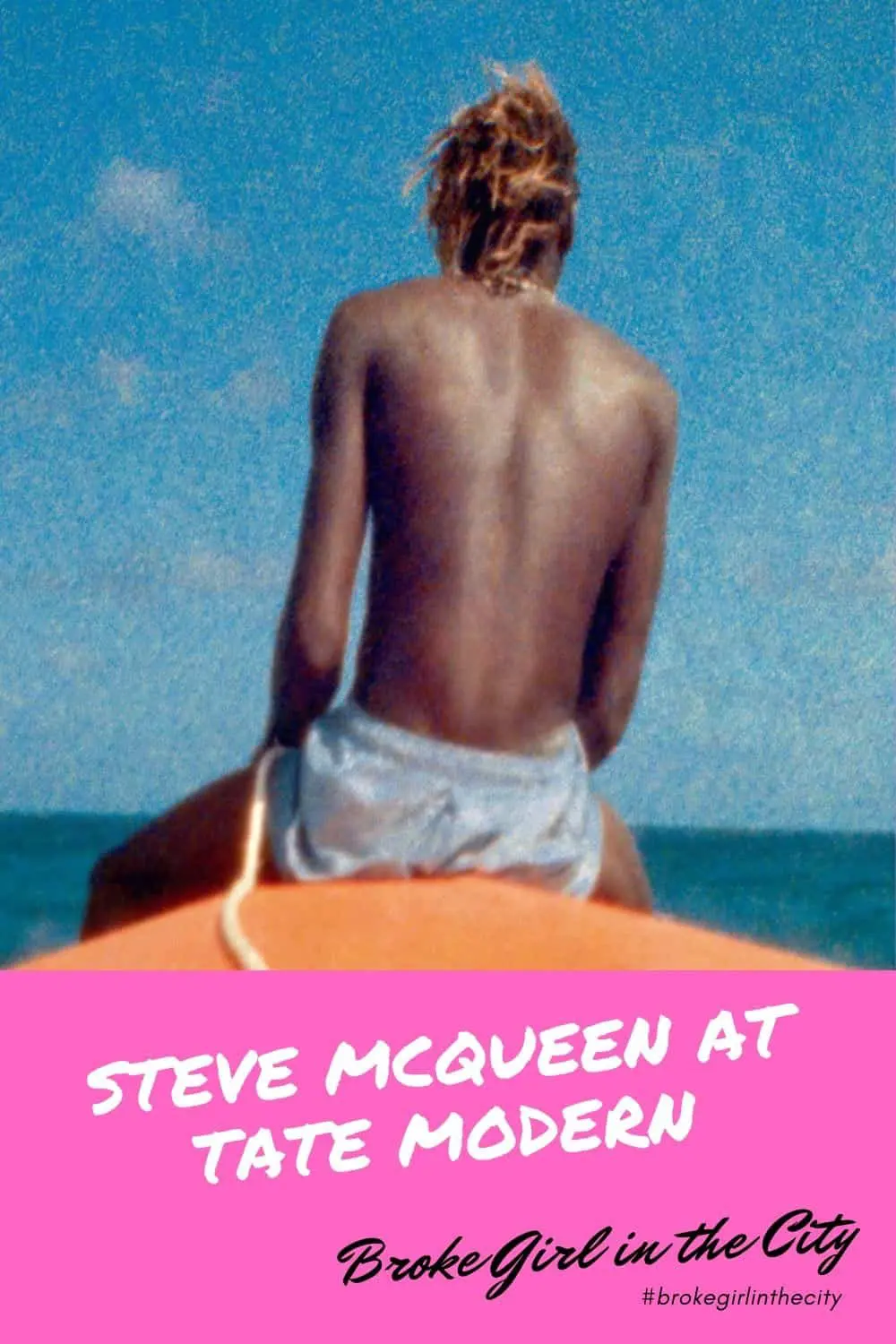
Steve McQueen at Tate Modern
13 February – 11 May 2020 | Open daily 10.00 – 18.00 | Until 22.00 on Friday and Saturday
Celebrated for his powerful and uncompromising vision. Steve McQueen creates work that addresses the urgent issues of representation, identity and history. Tate Modern presents the first survey of his work in the UK for over 20 years. Offering a timely moment to reflect on these themes.
Featuring 14 major works spanning film, photography and sculpture. The exhibition is an unprecedented opportunity to experience the depth of McQueen’s visual art career in this country for the first time since he received the Turner Prize in 1999.
Event Details
Where: TATE MODERN Bankside London SE1 9TG
When: 13 February – 11 May 2020
Price: £13 / FREE for Members
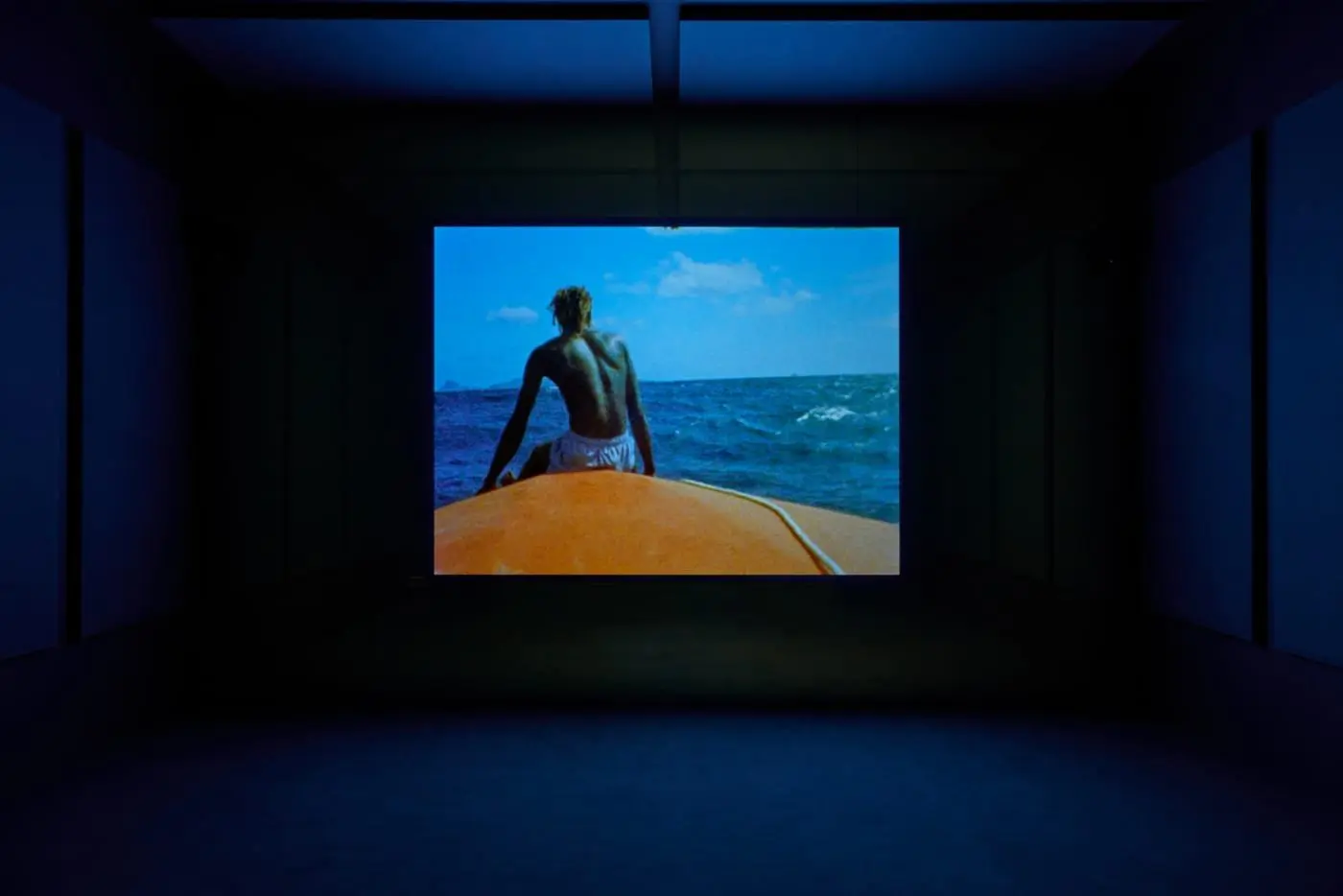
McQueen’s pioneering approaches to filmmaking
Over the last 25 years, McQueen (b.1969, London) has created some of the most innovative works of moving images designed for gallery spaces. As well as four critically acclaimed films for cinematic release: Hunger (2008), Shame (2010), 12 Years a Slave (2013) and Widows (2018).
Spanning two decades of his career. The exhibition reveals how McQueen’s pioneering approaches to filmmaking have expanded the ways in which artists work with the medium. Creating poignant portraits of time and place.
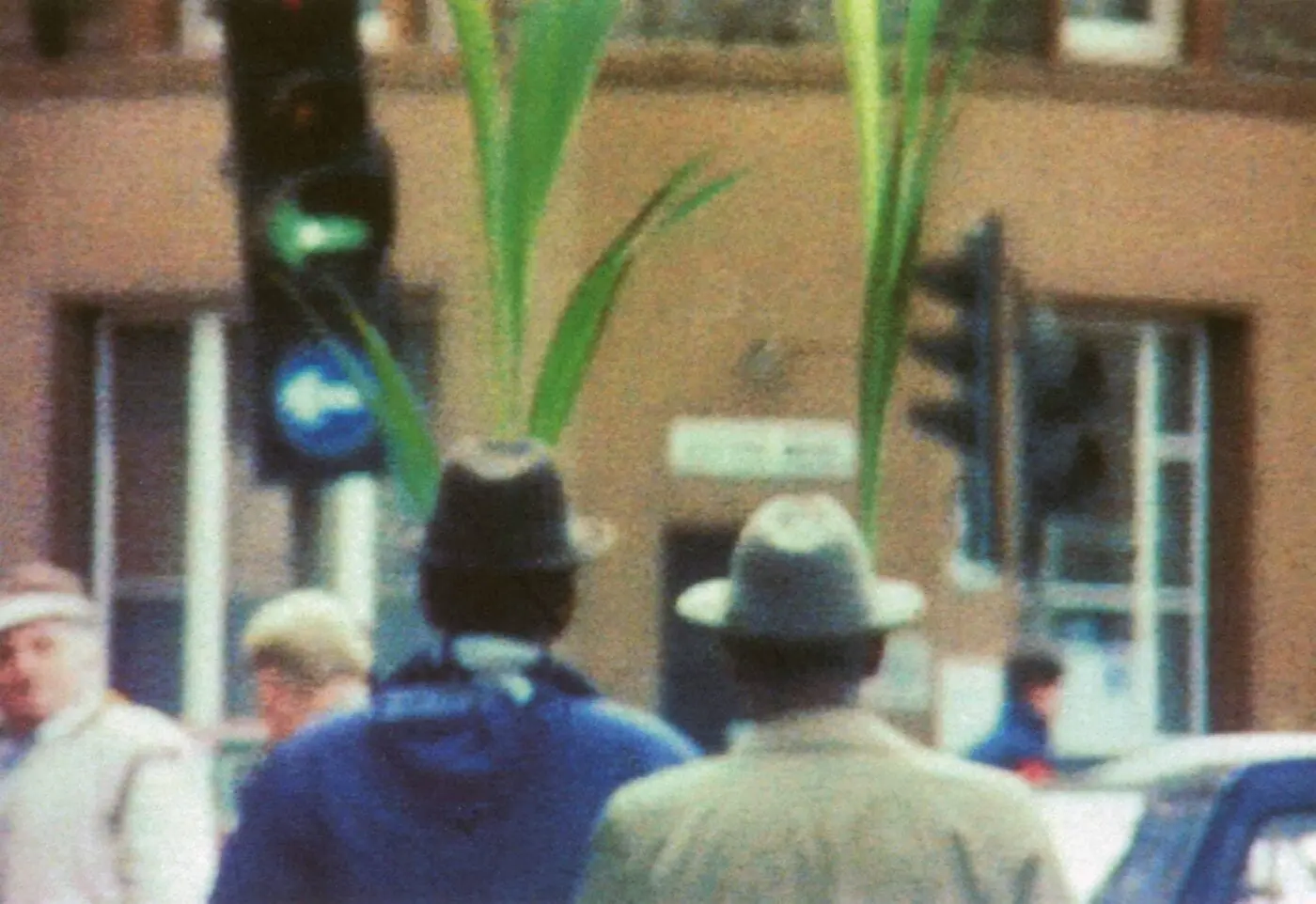
Exodus 1992/97
Visitors to Tate Modern can view personal and intimate works. Such as McQueen’s earliest film shot on a Super 8 camera, Exodus 1992/97, which reflects on migration and multiculturalism in his home city of London, and 7th Nov. 2001, in which the artist’s cousin Marcus recounts the tragic day he accidentally shot and fatally injured his brother.

Western Deep 2002 | Static 2009
These works are joined by immersive, large-scale video installations such as Western Deep 2002 and Static 2009. Originally commissioned for the landmark exhibition Documenta XI. Western Deep presents an intense, sensory exploration of the labour conditions of gold miners in South Africa. While Static’s aerial depiction of the Statue of Liberty visually scrutinises a familiar and heavily symbolic figure that can rarely be inspected up close.
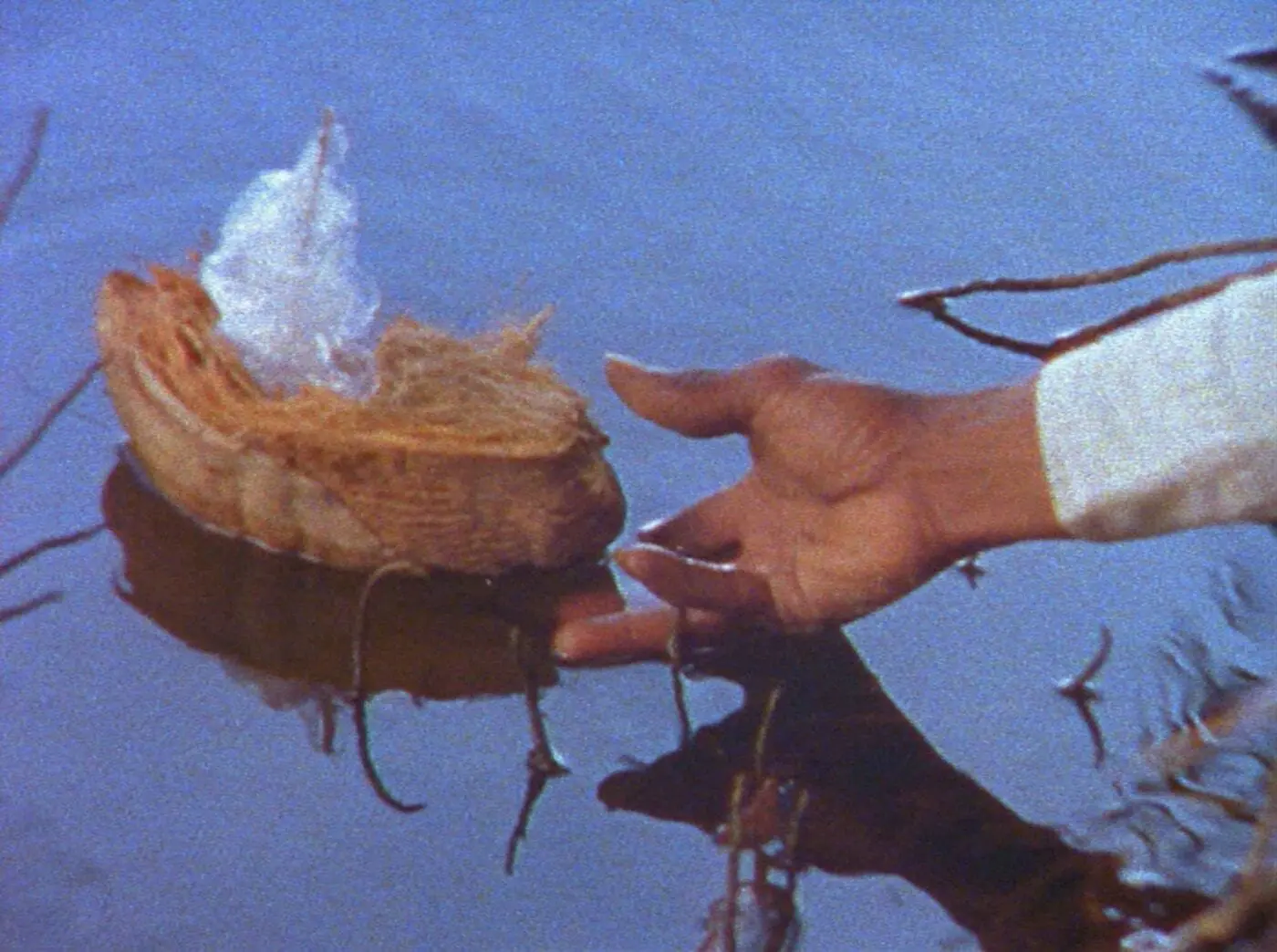
Caribs’ Leap 2002
As part of the exhibition, McQueen has chosen to display one of the screens of the two-channel film Caribs’ Leap 2002 on the iconic river façade of Tate Modern. Shown on a giant 7-metre screen Caribs’ Leap traces a day on the Caribbean island of Grenada. They are portraying the cycle of life and death. By showing this work overlooking the River Thames. McQueen invites the viewer to consider the histories and transatlantic connections between Grenada. Where the artist’s family is from, and the everyday life of London. Home to many people of West Indian descent.

Ashes 2002-15
Film. Super 8mm and 16mm, shown as HD. Courtesy of the artist, Thomas Dane Gallery and Martin Goodman Gallery
More recent work includes the haunting two-channel video installation Ashes 2002–15. Offering a moving tribute to the memory of a young fisherman the artist met and filmed in Grenada in 2002.
This dual-screen video installation had to be my favourite in the exhibition. Incredibly powerful, I saw this young man smiling from a boat on the sea. Carefree, happy, and smiling, the young man is filmed on the boat. The subject matter of the other film shows an older man, perspiring, looking tired, attending a grave. You can hear the sounds of the ocean and watch goats and a dog roaming freely among the graves. The film is incredibly evocative, and the sounds/visuals seem slightly incongruent with each other. The two films powerfully tell the story of his friend Ashes, who was a good guy’. Ashes found a batch of drugs on the beach and kept it, which led to his being killed. The ocean sounds are symbolic of his life, whilst the graves mark the end of this life.
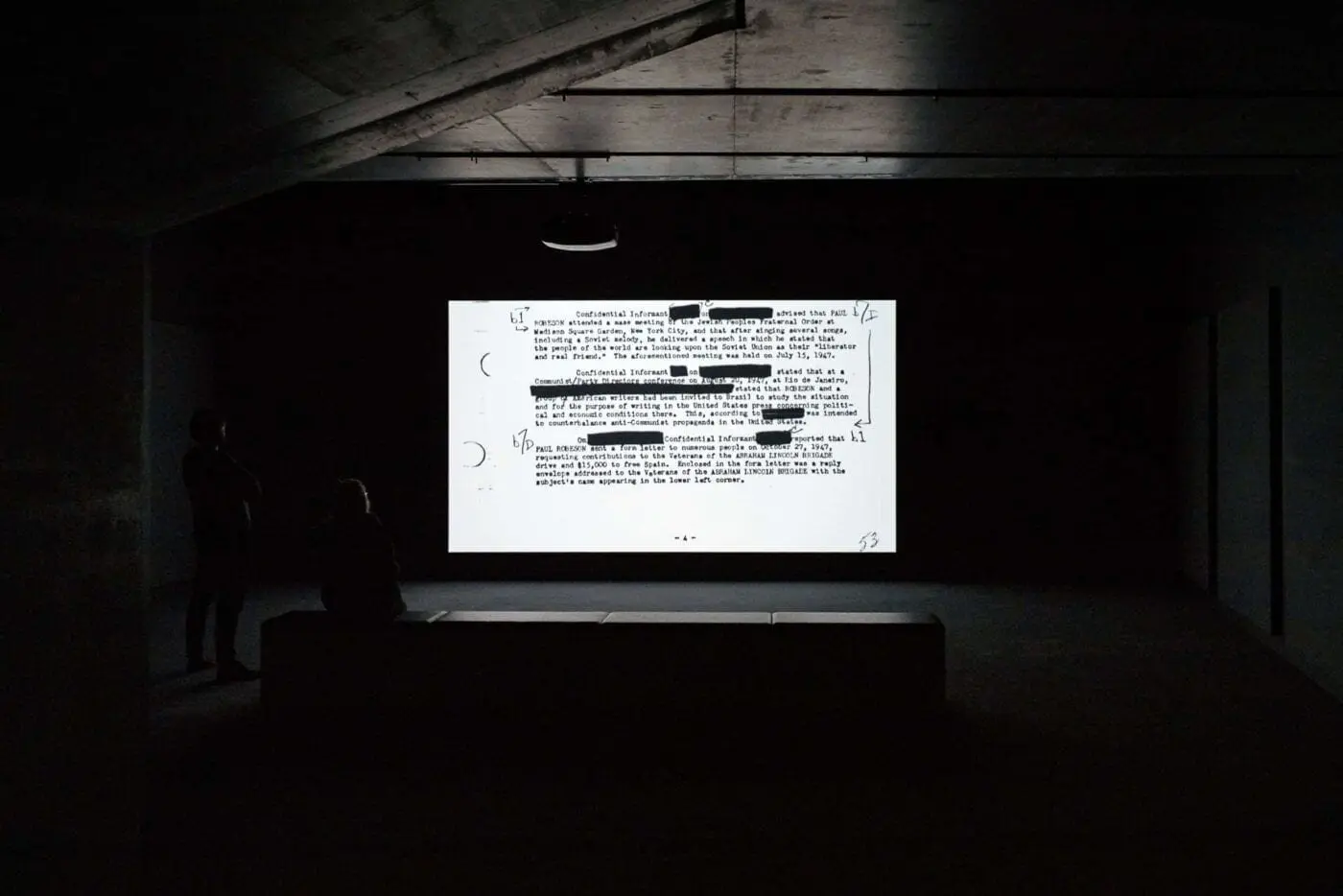
End Credits 2012-ongoing
For the first time in the UK, audiences can view End Credits 2012–ongoing. McQueen’s homage to the African-American singer, actor and civil rights activist Paul Robeson (1898–1976). After a successful career as a performer, Paul was blacklisted in the 1950s and put under surveillance by the FBI. The work consists of rolling slides of the FBI’s reports on Robeson. Featuring a soundtrack of voices reading from the heavily-redacted documents.
Weight 2016
The exhibition also features Weight 2016. A sculpture first exhibited by Artangel at the recently closed Reading Gaol. Where Oscar Wilde had been imprisoned and wrote De Profundis (1897). Presenting a gold-plated mosquito net draped over one of the prison’s metal bedframes to create a shimmering apparition. Weight explores the relationship between protection and confinement, the physical and the spiritual, and the redemptive power of the imagination.
“I remember my first school trip to Tate when I was an impressionable 8-year-old, which was really the moment I gained an understanding that anything is possible. I am very happy to be presenting my work in my hometown of London, especially at Tate Modern, where in some ways my journey as an artist first began.”
Steve McQueen
An epic portrait of London’s Year 3
This major exhibition coincides with McQueen’s latest artwork Year 3, on show at Tate Britain until 3 May 2020. An epic portrait of London’s Year 3 pupils created through a partnership between Tate, Artangel and A New Direction.
Clara Kim curates Steve McQueen at Tate Modern, The Daskalopoulos Senior Curator, with Fiontán Moran, Assistant Curator, Tate Modern and is organised in collaboration with Pirelli HangarBicocca, Milan. The exhibition will be accompanied by a catalogue featuring an in-depth interview with the artist by Hamza Walker and essays by Paul Gilroy, Clara Kim, Solveig Nelson and Clarrie Wallis.
Supported by the Steve McQueen Exhibition Supporters Circle, Tate International Council and Tate Patrons
For public information call +44(0)20 7887 8888, visit tate.org.uk or follow @Tate #SteveMcQueenExhibition
